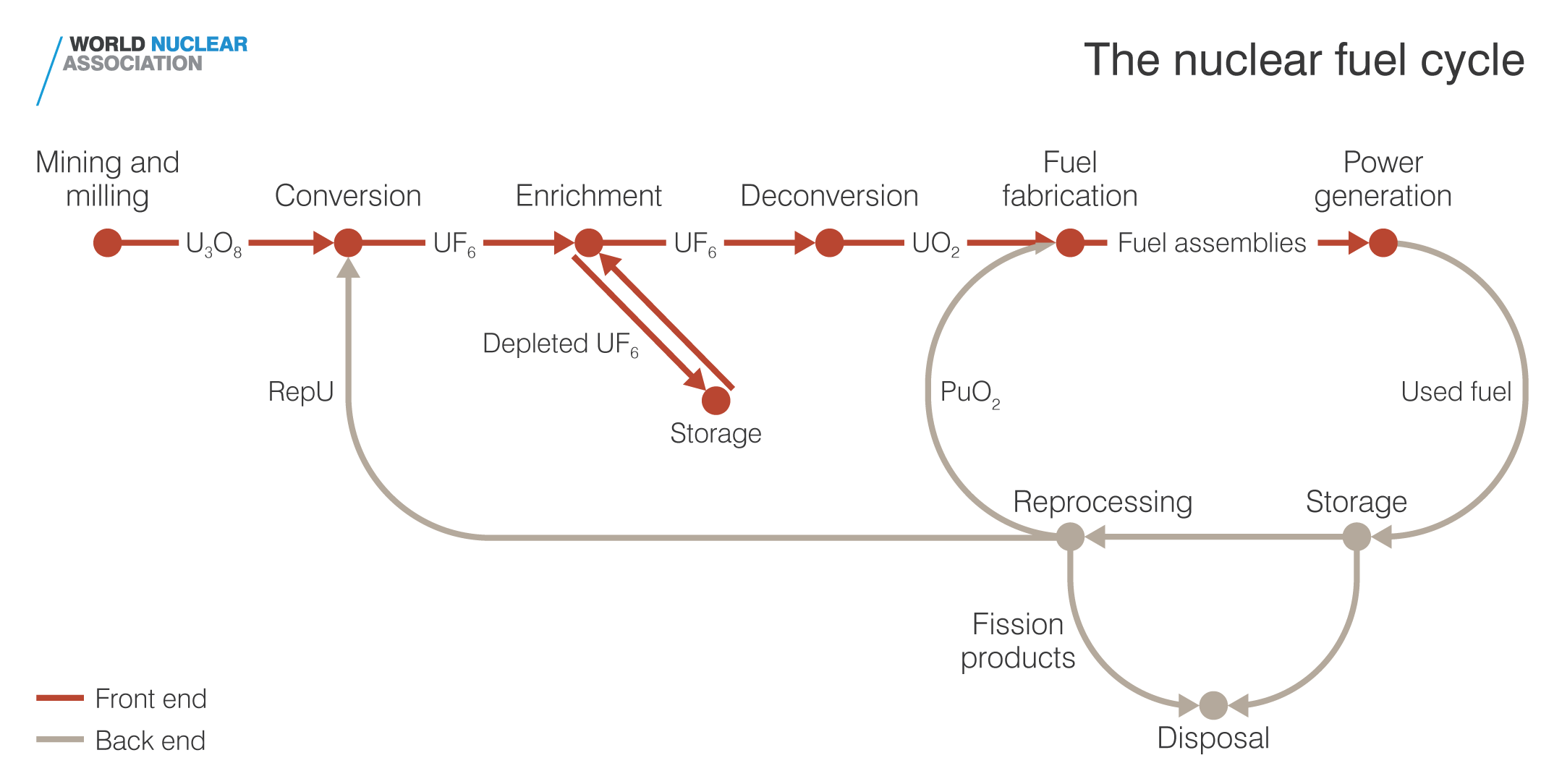Module 3. Presentation
In-core fuel management
The nuclear fuel cycle is the set of processes to condition fertile and fissile materials to produce energy in a nuclear reactor and subsequently reprocess and recycle, or store them, safely safeguarding the resulting radioactive waste.
The fuel cycle begins with the extraction of uranium ore, going through its milling, concentration, conversion, enrichment, fuel irradiation in the reactor, and the steps associated with the selected spent fuel disposal strategy.
The nuclear fuel cycle can be divided into two categories, the open cycle, and the closed cycle; the main difference being that the irradiated fuel is not reprocessed and recycled in the open cycle. As can be seen in Figure 1, in the open cycle, the fuel once it leaves the nuclear reactor is temporarily stored, either in spent fuel pools and/or in containers or in concrete vaults; these last two known as dry storage methods. Subsequently, the spent fuel is properly conditioned and definitively disposed of in a permanent repository, such as a Deep Geological Storage.
In the case of the closed cycle, the fuel is reprocessed and recycled, recovering part of the uranium still available in the fuel, as well as the plutonium that was produced in the reactor. As can be seen in the figure, the spent fuel, after temporary storage, goes through a reprocessing process to separate the uranium and plutonium, and reuse them to produce new fuels.
The stage that involves the activities and processes related to the optimal use of fuel for power generation in the reactor is known as in-core fuel management which is the subject of this module.
Figure 1. Nuclear fuel cycle

Source: World Nuclear Association Image Library: https://www.world-nuclear.org/gallery/the-world-nuclear-fuel-report-expanded-summary/the-nuclear-fuel-cycle.aspx
Objectives
- After completing this module, the student will be able to:
- List the basic parameters associated with in-core fuel management.
- Estimate the fuel batch reload fraction and its enrichment for an equilibrium cycle, using the linear reactivity method approach.
- Summarize the fundamental considerations of the reactor core design.
- List the stages of fuel reload design.
- Recognize the metaheuristic optimization approach.
- Summarize the principles of nuclear fuel assembly design.
- Interpret the importance of burnable poisons in the design of the nuclear fuel assembly.
- Explain the principles of radial fuel lattice design.
- Identify the optimization problem of the radial fuel lattice design and its solution through metaheuristic techniques.
- Explain the principles of axial fuel assembly design.
- Identify the problem of optimization of the fuel assembly axial design and its solution through metaheuristic techniques.
- Explain the principles of core loading pattern design.
- Identify the optimization problem of the core loading pattern design and its solution using metaheuristic techniques.
- Explain the principles of control rod pattern design.
- Interpret the requirements and knowledge rules associated with the design of the control rod pattern.
- Explain the methodology for calculating the levelized cost of the nuclear fuel cycle.
- Calculate the levelized cost of the open (once-through) nuclear fuel cycle.
Module evaluation form
The student will solve a questionnaire by topic and will apply a case study.

